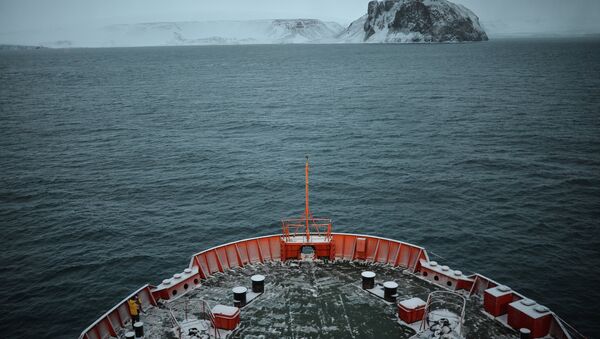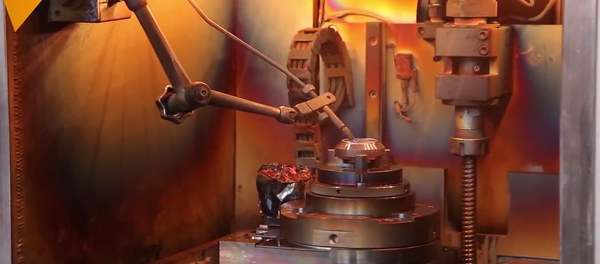MOSCOW (Sputnik) — The daredevils preferred to speak about their way to the surface rather than their dive into the deep waters.
"It was especially scary when we were returning to the surface and when we had to find the ice-hole. We got caught into a current, that was produced by the ice-breaker, standing nearby. As a professional, who knows the ice, I realized that it was almost impossible to get out of there and I got scared," Artur Chilingarov, the head of the expedition, said.
Fortunately, the team realized the mistake and managed to find its way back.
Anatoly Sagalevich, who was the pilot of MIR-1, recounted that when they were going up, he had no other choice but to remain calm and do his job.
"You simply do not have time to think about fear. You need to do what the situation requires, you simply do not have time to be afraid," Sagalevich said.
He noted that after both MIR submersibles returned to the surface a navigator who was at the bridge deck at the time apologized that not all the systems on the ice-breaker were shut down, leading to MIR-1 being dragged under the ice.
"It was a mistake, but in the end everything turned out the way it should be," Sagalevich stressed, adding that polar daredevils were aware of risk they were taking and recalling a conversation with his wife just before the start of the expedition.
"She asked if I realized that it was a 100-percent risk. I said I knew it. It is a 200-percent risk," Sagalevich said.
The expedition was recognized as a historic event by scientific community across the world. The MIR-1 with the crew including Sagalevich, Chilingarov and Vladimir Gruzdev, reached the seabed at 4,261 meters (about 13.9 feet) below the North Pole. The MIR-2 submersible with the crew of Yevgeny Chernyaev, Mike McDowell and Frederik Paulsen reached the seabed at the depth of 4,302 meters.
The Arctic 2007 took samples of earth and planted a flag on the seabed. Findings produced by the expedition were used among other evidence as a scientific basis for Russia’s bid to the United Nations to recognize its rights to the Arctic continental shelf.
Sagalevich recalled that when he was giving a speech after the expedition at a convention in the United States, one of the people present was US former astronaut Buzz Aldrin. According to Sagalevich, Aldrin said that the crew did something that could only be repeated when the ice at the North Pole melted, asking people to stand up and honor the expedition participants.
All members of the expedition agreed that despite all the risks and challenges, the Arctic remained the source of inspiration for researchers and its secrets were yet to be revealed by scientists.
"There are a lot of young scientists in the world who are focusing on polar activities, especially on the question of climate change," Mike McDowel told Sputnik after the press conference ended.
McDowel said he believed that the Arctic was a region that stayed out of politics and that its ice-cap was a common ground for cooperation for people across the world.




